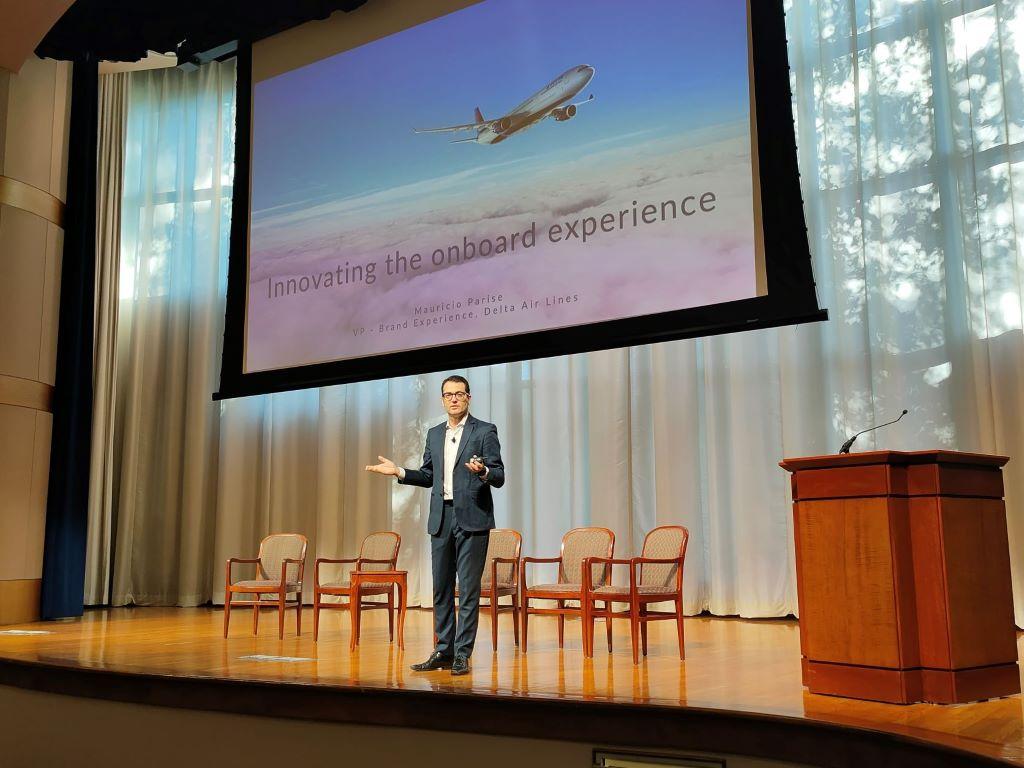
What will future aircraft cabins look like and how will the industry keep up in an ever-changing world to give passengers the best experience possible? Which parts of the cabin are pain points for passengers and crew? And what should innovators be looking at today to improve customer experience in the future?
These are the questions that over 200 OEMs, airlines, suppliers and designers gathered to ask last week at the Red Cabin Aircraft Cabin Innovation Summit in Atlanta, Georgia.
In his keynote address, Delta Air Lines VP-brand experience Mauricio Parise told an audience of innovators to take a holistic look across the journey. He said that keeping innovation going in a complex industry requires planning, listening and partnering with many colleagues to answer questions that haven’t been asked.
Summit chairman Anthony Harcup, also senior director at Teague, said the last few tough years saw the industry contract to half its size, “and then suddenly deal with so much pressure on travel.” In human terms, Harcup said it was like “getting someone off of a life support machine and asking them to run a marathon.” However, he also acknowledged it has been an “incubation period for new ideas and a show of resilience for the industry.”
During this time, Harcup said industry players have come up with new ways of doing and looking at things. “And Red Cabin has been a mirror for that—it’s about collaboration and getting great minds in the industry together.”
Rather than just bouncing ideas off the stage, the collaboration approaches last week took a hard look at a wide variety of cabin interiors topics, which included exploring new ways to achieve circularity for sustainable materials and accessibility to enable all passengers to travel with dignity.
When looking at the diversity of customers, Parise said innovators must dissect their needs. “Three things always come: one is empowerment and the need to have control over their process—which may be coming from different mindsets.” He asked, “How do we serve that customer in a way that we’re meeting that mindset? That’s a huge opportunity.”
The other two parts are caring for people by making sure they are being serviced as individuals through personalization, as well as values. “When your brand meets your customer’s values, an emotional connection emerges and the relationship becomes strong.” Sustainability is the obvious example,” he said, adding that sustainability has been talked about for 10 years and now it is mainstream. Others agreed that everything that is done in the cabin must be done with sustainability in mind.
When Delta considers new products—from seats and cabin interior designs to IFE and amenity kits—Parise said the first question to ask is, “How do you want customers to feel? And when you ask that question, it is never one thing.”
“When we think about new experiences, the number one rule is, you don’t design anything if you don’t have the people to actually execute the design and participate in the process. If you don’t bring that team along with us on seats or anything we do here from the beginning, the execution is not going to be as good as it could have been if you’re working together every step of the way. And bring the engineers and folks who actually can bring those things to life with us and, ultimately, together we can create the next chapter of the travel industry.”





